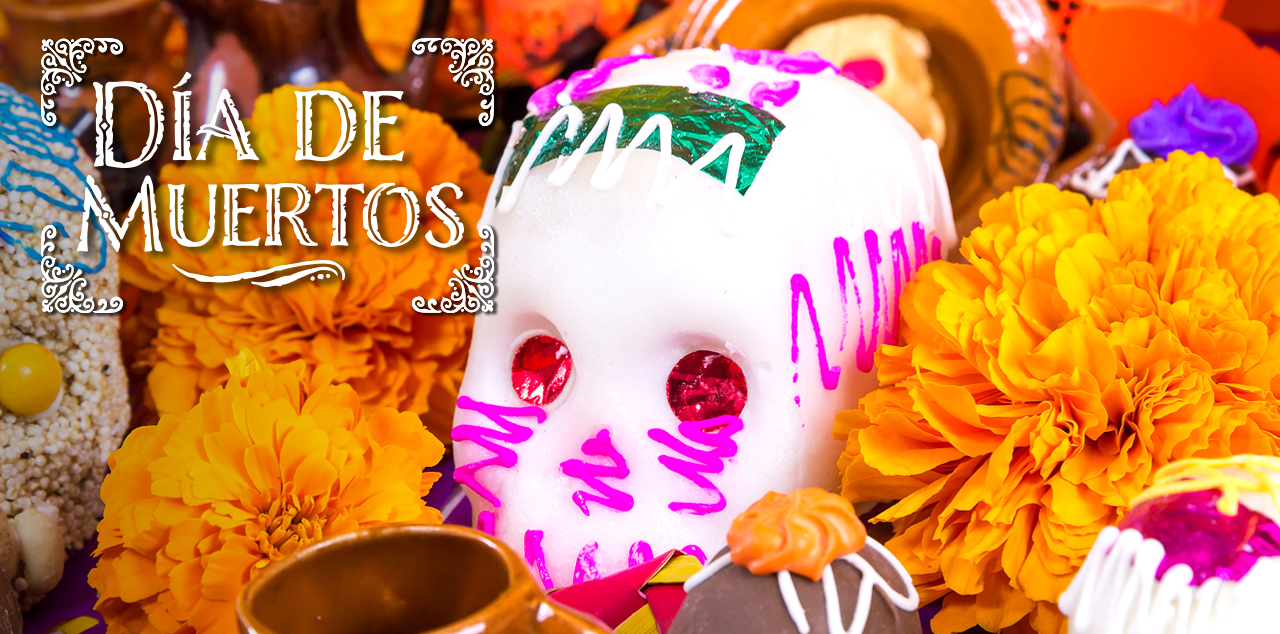
Every year, a joyous celebration, dedicated to death, floods the streets of Mexico. It’s the Day of the Dead, traditionally held on November 2nd.
Each November, in Mexico, the smell of incense fills the churches, colorful papers and candles light up home altars and squares are decorated with Catrinas and carpets made of marigolds to celebrate the Day of the Dead. UNESCO declared this Mexican tradition as an Intangible Cultural Heritage of Humanity and although we now have a modified version, it’s still alive and strong.
What is the Day of the Dead?
This festivity, with cheerful tone and folk music, remembers and honors those loved ones who are no longer with us. At the Mexican homes, the Day of the Dead is most commonly celebrated with altars for the deceased. “We don’t celebrate their departure, we celebrate the time they spent with us”, is the motto of thousands of Mexicans who keep the tradition of the Day of the Dead alive and strong.
Other aspects of these celebrations are the candy skulls, drawings mocking death; and verses making fun of popular characters and celebrities. They are part of the tradition and refer to the famous adage: ‘the dead to the box and living to the party’.
Where was this holiday born?
The roots of the Day of the Dead celebration in Mexico can be traced back to over 3,000 years ago in the Mesoamerican cultures, such as the Aztecs, Mayans, Purepecha, Nahua and Totonac. In these ceremonies, they celebrated the lives of their ancestors. It was a common practice to keep skulls as trophies and display them during rituals to symbolize death and rebirth. The Mayan culture celebrated, during August, a festival that held similarities with the Day of the Dead currently celebrated.
Day of the Dead also matches with the Catholic celebration of All Saints Day, held on November 1st, and All Souls Day, held on November 2nd. Also, the American Halloween, “All Hallows Eve” in its origins, takes place on the eve of All Saints Day, October 31st.
It was during the Spanish conquest, horrified by the pagan practices of the Mayan culture, that the Spaniards decided to change the date to match with the catholic celebrations, thus creating the Day of the Dead.
What is an Altar?

Nowadays, the purpose of an Altar is to pay tribute to the departed loved ones. For this reason, the deceased personal belongings are incorporated. However, this tradition is deeply rooted in our pre-Hispanic cultures, in which the Altar intended to serve as a portal to the underworld to invite the spirits of the honored to our world during the celebration.
What can you find in an Altar?
From crosses to flowers and food, there are basic elements that can be found in a home altar. But each region has its own traditions and carry out this practice different ways.
Some of the main elements are:
- Cross: because of its Catholic origins.
- Arc: representing the entrance to the world of the dead and decorated with flowers.
- Candles: representing “The Light”, the lightning of his/her way or his/her presence beside God. For children, candles must be colorful; for adults black or white is used.
- Flowers: for decorative purposes, the intention is to make use of the flowers found at home. Marigolds are the most common.
- Offerings: dedications to the dead and invitations to visit. It is common to see food, clothing, alcoholic beverages, ornaments and things that belonged to them.
- Incense: copal, an aromatic resin, was originally used instead. The pleasant scent attracts the dead to the offering, also it helps the purification of the soul and space.
- Salt: it’s placed in a container as a symbol of purification.
- Glass: serving as a digestive. A glass of water to “wash down” the food.
- Photography: using the image of the deceased means you remember that person and. Some regions place a mirror that only reflects the image as a matter of respect.
- Tablecloth: with ornamental purpose, is a demonstration of the importance of the event.
- Skulls: sugar skulls are not only delicious. They are meant as a healthy mockery to death.
- Dog: regularly a Xoloitzcuintle breed, is placed to help spirits cross the river of the underworld.
Humor facing death
In Mexico, death is peculiarly perceived, as people use satire to mock it. An example of this expression is the famous “Catrina”; a popular character wearing the clothes of a high society lady as a sign of the presence of death in the everyday life and regardless of social status.
Another example is the skulls, as they are not only made sugar. The “Calaveritas”, meaning little skulls, are literary works consisting of rhymed verses that make fun of situations of arts, science or political figures using the topic of death with a humorous and ironic purpose. And finally, we have the bread of the dead, a bread eaten by the living. This delicious round bread, topped with sugar and decorated with strips that simulate bones, is a must at dinners and offerings during the celebrations of the Day of the Dead.



